Вы здесь
History of town of Fergana.

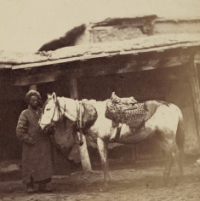
Individual tours and excursions to Fergana.
“Fergana is a region in the fifth climate, located on the border of cultivated land. In the east of it, Kashgar, in the west, Samarkand, in the south, the mountains of the Badakhshan border; in the north, although there used to be such cities as Almalyk, Almaty and Yangi, whose name is written in the Otrar books, but now because of the Mogul and Uzbeks invasions, they have been destroyed and there are no settlements left.
Fergana is a small area, there is a lot of bread and fruits there. Around Fergana there are mountains; from the western outskirts, where Samarkand and Khojend, there are no mountains; in winter, from no side except this one, the enemy cannot pass.
The Seihun River, known as the Khojend Waters, comes to Fergana from the northeast side; passing through this area, it flows westward, passes north of Khojend and south of Finaket, which is now better known as Shahrukhia, then again dodges northward and flows towards Turkestan, far below Turkestan this river, not merging with any other river] , all absorbed in the sand and disappears.
There are seven cities in Fergana; five of them are on the south bank of the river Seihun, two are on the north bank”
Zahir ad-Din Mohammed Babur. "Babur-Nama." The events of the year eight hundred and ninety ninth, 1493 - 1494. (trans. M. A. Salier) Text reproduced from: Babur-name. Tashkent. The main editors of encyclopedias. 1992
Excursion tours to Fergana.
135 ago it was decided to build a city, which today is known as Fergana. How it was? In the mid-1870s, the former Kokand Khanate was annexed to the Russian Empire. The palace complex of the last ruler of the country, built only the day before, the urda, became the original seat of the new administration.
It housed not only military and civilian institutions, but also an Orthodox church, apartments for officers and officials, a warehouse, trading shops, barracks and an infirmary. Thus, the residence of Khudoyar Khan turned into a Russian military fortress with all its attributes.
However, unlike other significant cities in the region, which became the regional centers of the Turkestan region after the Russian conquest, Kokand - the largest city after Central Asia after Tashkent - suddenly turned into a regular county center.
The explanation for this is found in the documents stored in the Central State Archive of Uzbekistan. In a letter addressed to the head of the Turkestan Territory K.P. von Kaufman, the conqueror of Fergana and the first military governor of the newly formed region, General MD Skobelev, proposed to organize a new regional center.
He explained his proposal with several considerations. First, Kokand, the former capital of the Khanate, is a large and extremely densely built city. Secondly, the area in which it is located is very windy and dusty. Thirdly, its climate is very unfavorable, as evidenced by laboratory analyzes of water and air samples.
The message ended with a council to place the regional center of the Fergana region in another, more suitable place for this, for example, in the vicinity of Margilan. Taking into account the recommendations of Skobelev, supplemented by reports of other officials about the cramped and unsanitary conditions in the rooms of Kokand Urda, about the constant release of groundwater there and about other climatic problems, the Governor-General of Turkestan ordered to start building a new capital of the region.
The place for it was chosen very carefully: a city of the European type began to be built a few kilometers from Margilan, on free land in the upper reaches of the river Margilan-sai. This area had a milder climate, was well supplied with drinking water and was in much better sanitary condition than Kokand.
The construction project of the regional center, developed in March 1877, was approved by the Governor General of the Turkestan Territory on June 18 of the same year. The city was named New Margilan. And although its construction has not yet been completed, by the highest decree of April 27, 1877 all regional institutions were transferred here from Kokand.
The total area of New Margilan, according to the original project, was eight and a half square miles (9,000 square meters). The construction of the city was carried out according to a strict plan. At first, the entire area was divided into quarters in which administrative buildings and residential buildings were to be erected.
And each quarter had to accommodate from 10 to 16 yards. Each yard was given a plot of land measuring about 500 square meters. All houses and plots were to be numbered and built only according to the planned project. Naturally, the pre-emptive construction right had the military administration buildings and public buildings.
And only then the remaining free land was transferred to private individuals for the construction of residential buildings. In the summer of 1877, the construction of the first important objects began almost simultaneously - the offices of the regional government, post office, telegraph office, the house of the assistant to the military governor and the dacha for the governor himself. About 155 thousand rubles were allocated for these objects.
The rest of the buildings were built either at the expense of their future lease, or paid for by private contractors. In addition, the regional administration has allocated a considerable amount - 215 thousand rubles - to private developers.
This loan was received only by officers and officials of the Orthodox faith (a total of 31 people) for a period of five years. The construction of the city was fast and very successful, and therefore less than a year later (April 19, 1878), von Kaufman ordered to move the central office of the Fergana regional military governor and administration from Kokand to New Margilan.
The experienced and talented architect I.А.Lekhanov supervised the construction of the new Margilan, according to the designs of which several of the most significant buildings of Tashkent were erected. And although most of the funds allocated for the construction of the regional center had already been mastered, von Kaufman insisted that the project be completed at an “accelerated pace”.
Almost all construction materials for the city were brought from Russia, which significantly increased costs. And then it was decided to establish on-site production of burnt bricks. In the shortest possible time its production was adjusted.
However, local bricks turned out to be completely unsuitable due to poor quality. And then energetic businessman G.I.Petrov, who built a new plant on the outskirts of the city, took up the matter. The first batch of his brick was released at the end of 1879.
However, the capacity of this enterprise was small, and as early as next year six more brick factories were launched in the same area of the city. Together, the new Margilan entrepreneurs soon produced about 300 thousand bricks a year. And after five years, the number is more than doubled.
However, brick factories experienced great difficulties due to the lack of fuel needed for production. And then the missing coal was replaced with a local product - every day at least one hundred spikes of arbs were brought from the Yazyavan steppe to New Margilan.
At the same time, other problems were solved, in particular, irrigation and irrigation. Solving them was entrusted to an experienced person - captain-topographer M.D.Zhilin, who recruited the indigenous Margilan to the cooperation - Mirab Akhmad Sultanov.
Developing an irrigation plan for the city and setting the norms for drinking water, Zhilin ordered another 24 additional wells to be dug, which made it possible to fully meet the needs of the growing city. In addition, the captain, in case of spring floods, on his own initiative, developed a project for the construction of dams and other irrigation facilities on the banks of the Margilan-sai and Shakhimardan-sai rivers - the main sources of water supply for New Margilan.
Particular attention was paid to the power of greening the city. To do this, a special nursery of greenery with an area of 22 acres, a city park (27 acres), green areas between the barracks and a military camp (30 acres), around the church (3 acres), for training soldiers (85 acres) was created.
Around 13 quarters of trees and shrubs were planted around the quarter occupied by the barracks. At the end of 1880, more than three thousand ornamental trees were planted in the governor’s park, and a garden was planted and flower beds were planted around the building of the military assembly.
It is worth noting that in ten years the nursery of New Margilan became one of the important scientific centers of Turkestan. The seedlings grown and acclimatized here were sent not only to other cities and villages of the Fergana Valley, but also beyond its borders.
The capital of the Fergana region, New Margilan, was built along the same radial-ring system as other cities of Russian Turkestan. Just as in them, the center of the planning structure of the city was a fortress, from which the main streets fanned out.
A distinctive feature of New Margilan was that it was located away from the railway line and therefore did not become a center of trade and industry, giving up this role to Kokand. The main place in the city’s economy was occupied by trade and handicraft.
Since the railway line did not go to New Margilan, the train passengers had to leave (or take the car) at the Gorchakovo station (now Margilan), located a few kilometers from the regional center, and then continue on their way in a cab.
This gave a wide opportunity for the development of the corresponding trade, which made up almost the bulk of the income of some rich entrepreneurs. The first industrial enterprise of the city, apart from small brick factories, was the Sobolev brewery on Gubernatorskaya Street, which had already released more than 4,000 buckets of beer in its first year (1880).
Three years later, who had rented this enterprise, a certain merchant Firsov, brought his productivity to 8,000 buckets. The new Margilan was, first of all, a military city, which was emphasized not only by the presence of a fortress and the planning system subordinate to it, but also by a significant number of barracks and military institutions in the structure of residential buildings.
However, this city differed from similar regional centers of Turkestan in its spaciousness, width of streets and avenues, and magnificent green outfit. Even in its central part, the city did not have such a crowded residential area as in Tashkent and Samarkand.
And therefore, occupying a fairly significant area, New Margilan had a significantly smaller population than other cities of the Fergana Valley. So, according to the census of 1897, there were more than 82 thousand inhabitants in Kokand, 62 thousand in Namangan, 46 thousand in Andijan, 37 thousand in old Margilan, and only 8977 people in the capital of the region.
And 15 years later, in New Margilan there were no more than 12,000 inhabitants. Another feature distinguished this city from Tashkent and Samarkand - a clear selection of its public and administrative center. One of the oldest buildings in New Margilan is the Military Assembly.
The Russian who visited here at the end of the XIXth century wrote in his notes: “The Novo-Margilan Military Assembly is housed in a magnificent extensive building, built in 1878 specifically for this purpose. There are dancing and dining halls in two lights of such size that all Margilan society can freely accommodate in itself.”
Another decoration of the city was the building of the residence of the military governor of the Fergana region, which adjoined a large beautiful park with avenues of ornamental trees, a pond and interesting entrance gates.
At one time it was the most representative building of buildings like the destination in Turkestan. The builder of this magnificent building (which now houses the regional drama theater) was the above-named architect I.A. Lekhanov. Alexander Nevsky Cathedral, built by architect I.S. Katner
And opposite it was the monumental building of the male gymnasium (architect G. M. Svarichevsky), now occupied by the university. The same project was then repeated for the needs of women's gymnasiums, first in Samarkand (now the building of the biological faculty of the university), and then in Chardzhuya.
As early as in 1877, a meteorological station appeared in the city, in 1896 a branch of the Turkestan Geographical Society was created, and a local history museum was later founded. There were also various amateur circles: theater, literary, popular and orchestral music.
In 1910, the city of New Margilan was renamed: it received the name of its founding father - General MD Skobelev. He bore this name until 1924, and after the disengagement of Turkestan and the formation of the Uzbek SSR, the city became known as Fergana.
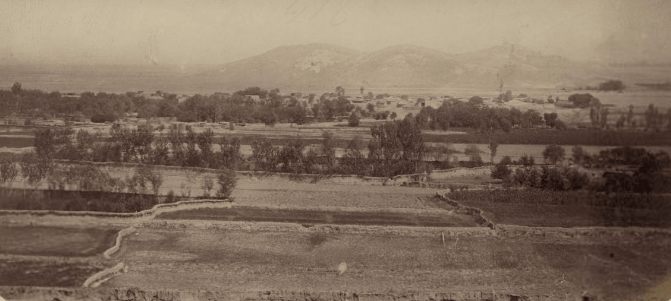
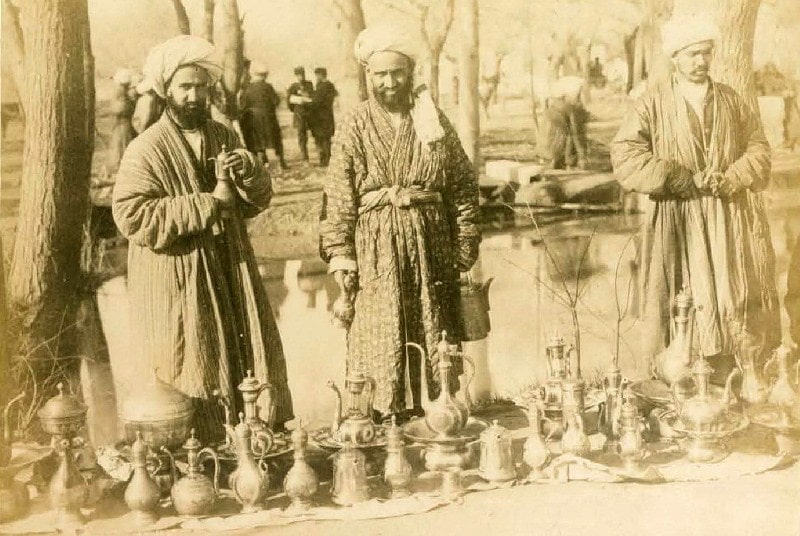
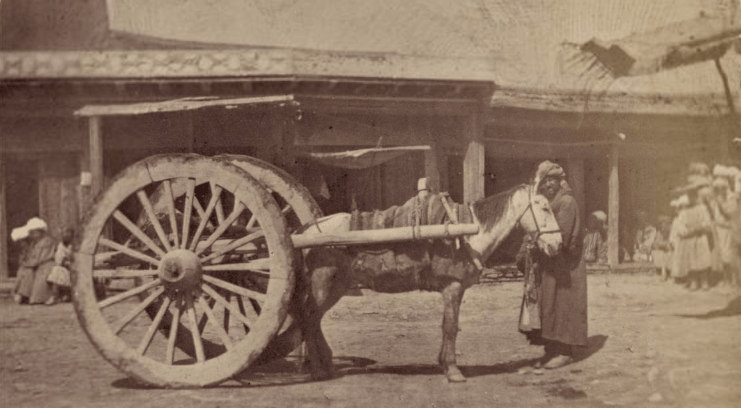
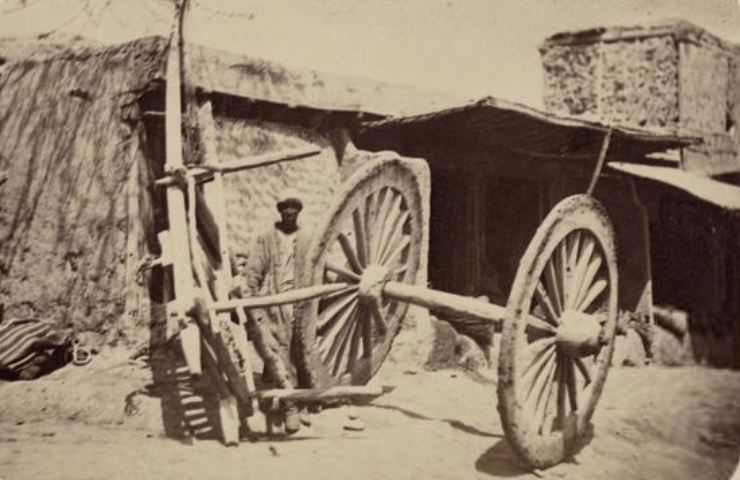
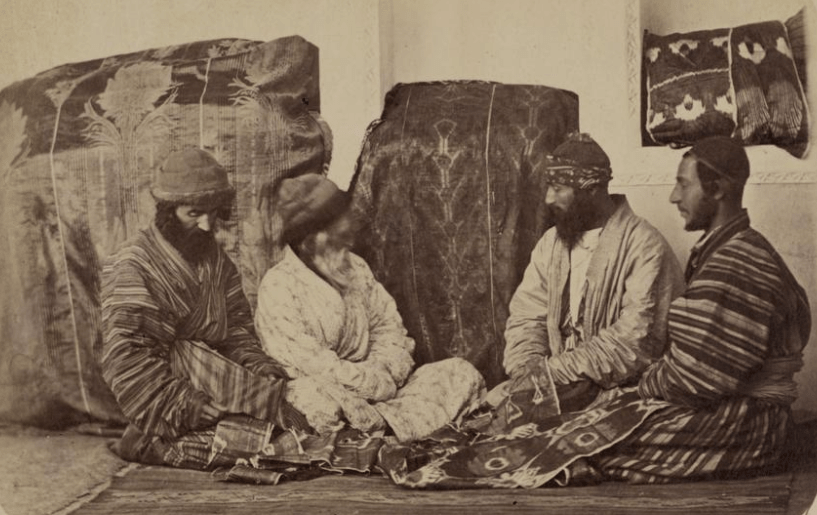
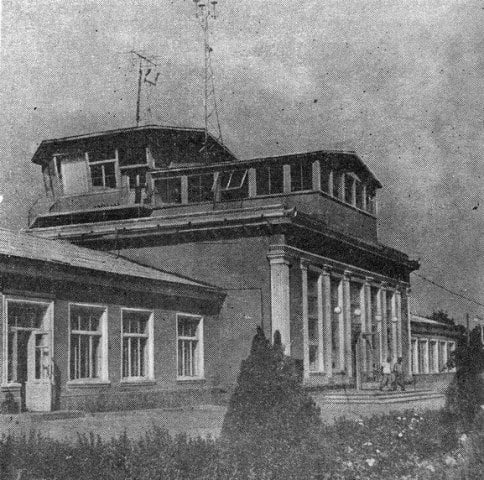
Authority:
The author Ruben Naaryan. https://mytashkent.uz/2011/12/03/kak-voznik-gorod-fergana/
Photos
from Turkestan album. Published in 1872 in St. Petersburg, by order of the first Tashkent Governor-General Konstantin Petrovich von Kaufman. The album included four parts: the archaeological (two volumes), the ethnographic (two volumes), the crafts of the peoples of Central Asia (the trade) and the historical part. The number of photos is more than 1200. Compiled by A. L. Kuhn (1871 - 1872). The collection of materials for a multi-volume publication for more than two years was carried out in the military topographic department of Tashkent, where lithographic parts of each plate were printed. A complete set of all volumes and parts of this book is stored today only in three collections: in the National Library of Uzbekistan in Tashkent, in the V. Lenin State Library in Moscow and in the Library of the US Congress in Washington. Each of the six volumes of the Turkestan Album is a huge folio, upholstered in green leather, 45 by 60 centimeters in size. Each page of the publication contains from one to eight photos, made with the technology of albumen printing (based on egg white). In 2007, the National Library of Congress completed the full digitization of all pages of the Turkestan Album.







